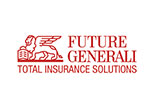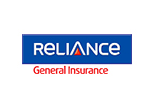IDV in Car Insurance
Insured Declared Value (IDV) in Car Insurance
Insurance is an essential aspect of responsible car ownership. It not only provides financial protection in case of accidents but also offers peace of mind knowing that you're covered against unforeseen circumstances. One of the crucial components of car insurance is the Insured Declared Value (IDV), a term that often leaves policyholders puzzled. In this blog, we'll delve into what IDV is, why it's important, and how it impacts your car insurance policy.
Table of Contents
Insured Declared Value, or IDV, is the approximate market value of your car. It represents the maximum sum an insurance company will pay if your vehicle is stolen or suffers a total loss due to damage in an accident. IDV is determined by considering the manufacturer's listed price, depreciation, and other factors.
Importance of IDV
Understanding the concept of IDV is vital for multiple reasons:
- Premium Calculation: The premium you pay for your car insurance is directly linked to the IDV. A higher IDV generally results in a higher premium and vice versa.
- Claim Settlement: In case of theft or total loss, the insurance company reimburses you based on the IDV. It's crucial to set an appropriate IDV to ensure fair compensation.
- Policy Renewal: As your car ages, its IDV decreases due to depreciation. When renewing your policy, it's important to reassess the IDV to reflect the current market value accurately.
How to Choose the Right IDV?
Selecting the optimal Insured Declared Value requires a careful balance between affordability and adequate coverage. While setting a lower IDV to reduce premiums might be tempting, doing so might leave you financially vulnerable in case of a substantial claim. On the other hand, setting an excessively high IDV might lead to unnecessary premium expenses.
Some of the most important points that are advised to keep in mind are:
- Consult the Insurer: Insurance companies guide selecting an appropriate IDV based on your car's age, make, model, and other factors.
- Assess Your Car's Value: Research the market value of your car and its depreciation rate to make an informed decision.
- Consider Add-ons: If you've added significant accessories or modifications, factor these into the IDV calculation.
- Balance Premium and Coverage: Strike a balance between a reasonable premium and sufficient coverage to ensure you're adequately protected.
Factors Affecting Depreciation and IDV
The following are the important factors that affect the IDV value of a car:
- Age of the Car: Depreciation starts the moment you drive your car off the showroom floor. In the initial years, the value of your vehicle depreciates at a faster rate. As your car gets older, the rate of depreciation slows down.
- Usage and Mileage: The more you drive your car, the higher the wear and tear. Higher mileage leads to a quicker decline in the car's value, resulting in a lower IDV.
- Location: The geographical location where you primarily use your car can impact its depreciation rate. Cars used in coastal areas might face faster depreciation due to the corrosive effects of saltwater and humidity.
- Accident History: If your car has been involved in accidents and has undergone repairs, its value might decrease more rapidly than an accident-free vehicle.
- Maintenance and Service: Regular maintenance and service can help maintain your car's value to some extent. A well-maintained vehicle might experience slower depreciation.
Understanding IDV Calculation
Calculating IDV of car involves the following steps:
- Manufacturer's Listed Price: The initial ex-showroom price of the car is considered as a starting point.
- Depreciation: Depreciation rates vary across car models and age. For example, new cars might have a depreciation rate of around 5% in the first year, and this rate increases gradually over the years.
- Accessories: If you've added extra fittings to your car, their value is added to the IDV. However, these additions don't usually account for their full value due to depreciation.
- Market Value: The final IDV is determined by considering the current market value of the car. This takes into account factors like supply and demand, and any changes in market conditions.
Impact on Premium
Choosing the right IDV directly influences your insurance premium. A higher IDV means a higher premium, while a lower IDV results in a more affordable premium. However, it's important to avoid setting an IDV that's too low to save on premiums, as this might leave you underinsured during a claim.
IDV and Comprehensive Coverage:
When opting for comprehensive car insurance, the IDV plays a significant role. In case of theft or total damage, your insurer reimburses you based on the IDV. Therefore, it's important to have an IDV that reflects the true value of your car to ensure proper compensation.
Relevance During Policy Renewal:
As your car ages, its IDV decreases due to depreciation. When renewing your policy, carefully reassess the IDV to ensure it accurately reflects your car's current market value. Failing to update the IDV might result in inadequate compensation during a claim.
Conclusion
In conclusion, Insured Declared Value (IDV) is a critical element in car insurance that directly impacts premium calculation and claim settlement. By understanding how IDV is determined and how it affects your policy, you can make informed decisions when selecting coverage for your vehicle. It's always a good idea to consult with your insurer or insurance agent to determine the most suitable IDV for your specific situation.
Remember, choosing the right IDV can provide you with the peace of mind you need while navigating the uncertainties of the road.
FAQs:
1. What is the Insured Declared Value (IDV)?
Answer: IDV is the approximate current market value of your car, determined by the insurance company. It represents the maximum amount the insurer will pay in case of theft or total loss due to an accident.
2. How is IDV calculated?
Answer: IDV is calculated based on factors such as the manufacturer's listed price, depreciation rate, age of the car, usage, mileage, location, and any added accessories. The formula for IDV calculation involves considering the initial price and applying the appropriate depreciation rate.
3. Why does IDV decrease over time?
Answer: IDV decreases due to the natural process of depreciation. As your car ages, its value decreases due to factors like wear and tear, technological advancements, and changing market conditions.
4. Can I choose the IDV for my car insurance policy?
Answer: While you can provide input on the IDV, insurance companies usually have predefined limits based on your car's age, make, model, and other factors. It's important to choose an IDV that accurately reflects your car's value to ensure proper coverage.
5. How does IDV affect my premium?
Answer: IDV directly affects your premium. A higher IDV results in a higher premium, while a lower IDV leads to a lower premium. It's crucial to strike a balance between the IDV and premium to ensure adequate coverage without overspending.
6. Is it better to choose a higher or lower IDV?
Answer: The ideal IDV strikes a balance between affordability and adequate coverage. While a lower IDV might lead to lower premiums, it could result in insufficient compensation during claims. On the other hand, an excessively high IDV might lead to unnecessary premium expenses. It's recommended to choose an IDV that aligns with your car's current market value and usage.
























































